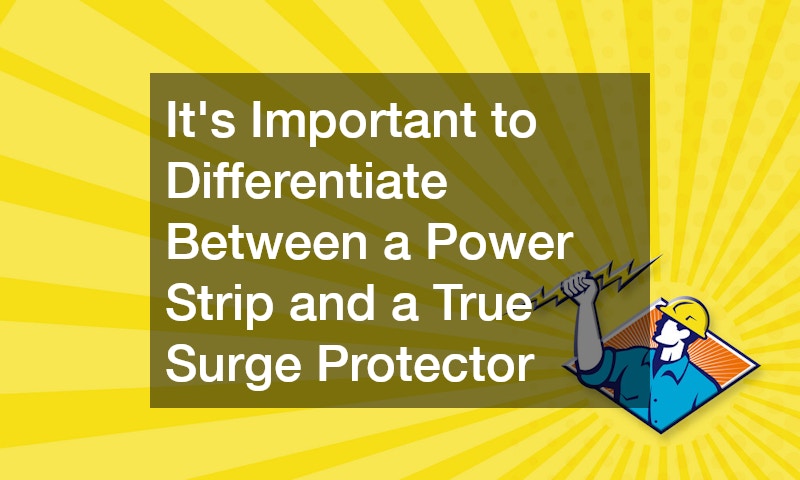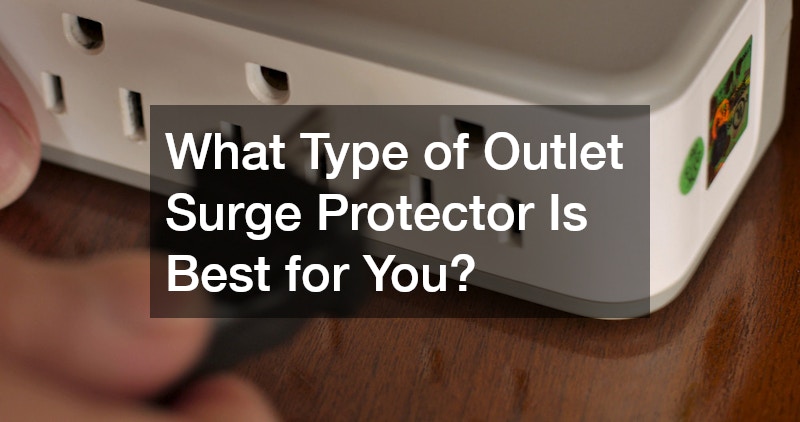The choice of an outlet surge protector is critical to ensuring the safety of your electronic devices. With numerous options available on the market, it can be challenging to determine which type of surge protector best suits your needs. This article will guide you through various types of outlet surge protectors, their benefits, and how to choose the perfect one for your home or office.
Understanding Surge Protectors
Outlet surge protectors are devices designed to protect electronic gadgets from voltage spikes. Such spikes can occur due to electrical storms, power outages, or any sudden increase in the electrical system’s voltage. It’s crucial to have a surge protector with a proper joule rating, which indicates how much energy it can absorb before failure. The higher the joule rating, the better the protection against power surges. Additionally, surge protectors help extend the life expectancy of your devices by preventing damage from electrical surges.
Different types of outlet surge protectors are available for various uses and budgets. There are basic power strips with limited surge protection, which are affordable but offer minimal safety features. Mid-range surge protectors come with additional features such as USB ports, while high-end models provide advanced protection, including telephone and coaxial cable surge protection. Knowing what each type offers can help narrow down your selections. Consider your specific needs to avoid overpaying for unnecessary features.
It’s important to differentiate between a power strip and a true surge protector. A power strip merely increases the number of outflow points but does not offer the same level of protection against voltage spikes. A surge protector, however, includes built-in suppressive circuits to manage transient voltages safely. Ensuring you have a surge protector rather than a simple power strip can save you from costly replacements and repairs. Always examine product labeling and specifications to ensure you are purchasing the correct device.
Features to Consider in an Outlet Surge Protector
When selecting an outlet surge protector, consider the number of outlets you require. If you have an extensive array of equipment, you may need a surge protector with eight or more outlets. Smaller setups might only require four to six outlets. Take inventory of how many devices you plan to connect and choose a surge protector that can accommodate that number comfortably. Keep in mind that more outlets could mean additional size; plan for spatial consideration.
Look into additional features that could enhance the surge protector’s functionality. Some models come with USB charging ports or compatibility with smart home systems to control power remotely. Features like indicator lights can inform you when the surge protector is no longer providing protection, allowing for timely replacements. Do not overlook warranty options that often accompany higher-end models, providing added financial protection against equipment damage. These added features can enhance convenience, safety, and assurance.
The clamping voltage of a surge protector is also a vital specification to consider. Clamping voltage, which is the threshold at which the surge protector begins to redirect excess voltage away from connected devices, can range from 120V to 400V. A lower clamping voltage offers better protection as it activates sooner. Consider a device with a clamping voltage closer to your location’s line voltage for optimal protection. Understanding these technical details can make a substantial difference in your surge protection strategy.
The Cost and Longevity of Surge Protectors
Price is an essential factor when selecting an outlet surge protector. Basic models can be purchased for as low as $10, while high-end protectors can exceed $100. The price often reflects the level of protection and additional features offered. Those living in areas prone to electrical storms might find investing in a higher-quality surge protector a suitable safeguard. Balancing price with your specific protection needs is crucial to getting the best value from your purchase.
Surge protectors are not eternal and usually come with a lifespan that depends on how much electrical disturbance they deal with. After withstanding multiple surges, their protective capacity diminishes, which is often indicated by an extinguished indicator light. To ensure continuous protection, it is advisable to replace your surge protector every two to three years, or sooner if you experience frequent power surges. Regular inspection and timely replacement can prevent unfortunate scenarios. Implementing a replacement schedule can save money and increase device longevity.
Factor in environmental responsibility when disposing of old surge protectors. Being conscientious about recycling e-waste can minimize the environmental footprint. Many manufacturers and retail locations accept old devices for recycling, keeping toxins out of landfills. Responsible disposal ensures that components such as metals and plastics are reused effectively. This eco-friendly approach can contribute to broader sustainability efforts.
Choosing the Right Surge Protector for Your Needs
The ideal outlet surge protector for you depends on your unique circumstances and requirements. Assess the equipment you’ll need to safeguard and the likelihood of experiencing power surges in your region. If your area frequently has storms or power fluctuations, prioritizing a surge protector with a high joule rating and low clamping voltage is wise. For those with fewer devices or in traditionally stable areas, a basic surge protector might suffice. Tailor your choice to ensure maximum protection without unnecessary expenditure.
Consider where you will place your surge protector and whether aesthetics or additional functionalities such as USB ports will be critical. In homes with tech-savvy inhabitants, a model featuring energy monitoring capabilities through smart home integration might be appropriate. Conversely, those who desire simplicity might prefer a straightforward model with just enough outlets for essential equipment. Think through your typical usage patterns and power needs before committing to a product. This strategic decision-making can lead to increased satisfaction and protection efficacy.
Ultimately, the best surge protector balances cost, capability, and convenience tailored to your specific circumstances. Investing time in research, comparing products, and reading reliable reviews can offer insights into the most suitable options available. Many well-reviewed models deliver impressive protection levels, but trust in a reputable brand is often the safest route. Remember, the right outlet surge protector is an investment in your peace of mind and the protection of your valuable electronics. Making an informed decision ensures that your household or office remains shielded from unexpected electrical disruptions.



